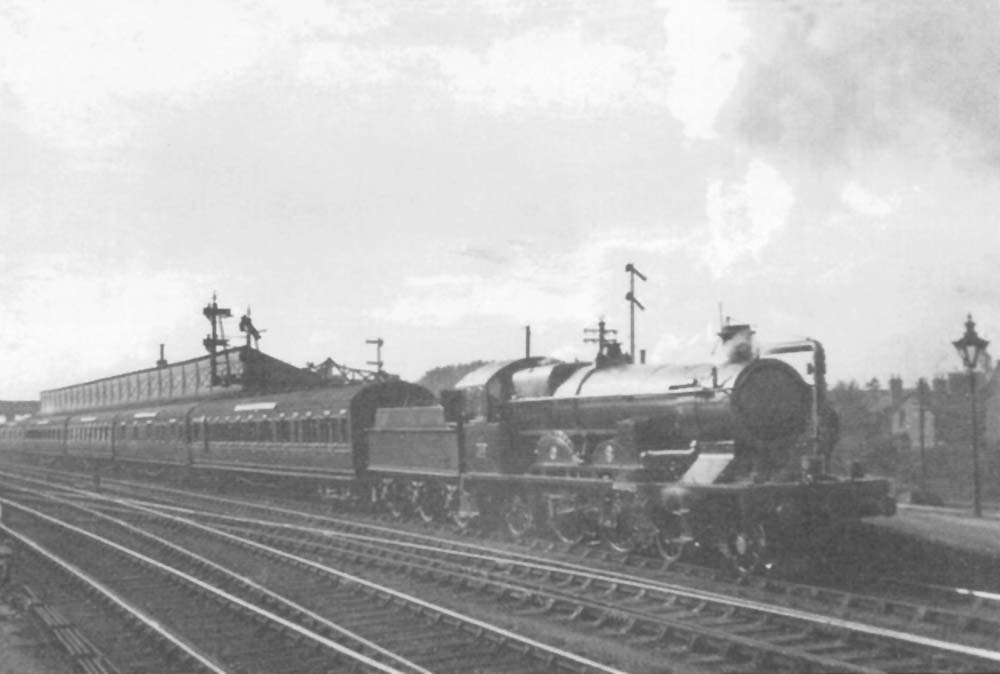 |
|
GWR Route: Banbury to Wolverhampton
Leamington Spa - GWR Locomotives: gwrls2079
 |
GWR 4-4-2 No 103 'President' stands at the head of an up
Wolverhampton to Paddington express in the early 1920s. The locomotive was one
of two ordered by the GWR in 1905 following an initial order in 1903. GJ
Churchward, Chief Mechanical Engineer of the GWR, was given authority to
purchase three French de Glehn-du Bousquet four-cylinder compound locomotives,
in order to evaluate the benefits of compounding. The first locomotive, No 102
La France, was delivered in 1903. Two further locomotives, No 103 and No 104,
were purchased in 1905. These were similar to the Paris-Orleans Railway's 3001
class, and slightly larger than the first locomotive delivered to the GWR in
1903. As with No 102, these were built by Société Alsacienne de
Constructions Mécaniques. They had two high pressure cylinders fitted
between the frames, and two low pressure cylinders outside. The high pressure
cylinders drove the front driving wheels while the low pressure cylinders drove
the rear driving wheels. An external steam pipe was mounted just in front of
the dome, looking rather similar in appearance to a top feed. In 1926, the
three locomotives were based at Oxford shed. In practice, they did not provide
any significant improvement in either performance or economy compared to No 171
Albion, Churchward's prototype 4-6-0, which was converted to a 4-4-2
specifically for comparison with the French locomotives. However elements of
their design, in particular the bogie, were adopted by other CME's such as
Stanier on the LMS and Thomson on the LNER. The locomotive completed some
750,000 miles, much of it on the Wolverhampton to Paddington route, before it
was withdrawn in March 1927 from OX Oxford shed.
 back back

|
